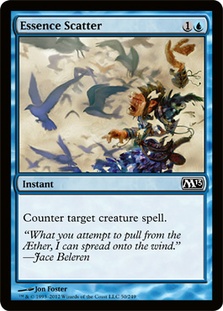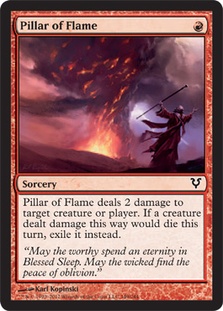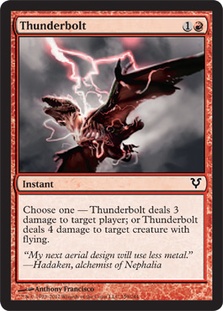Hurricane Sandy is swirling and whirling outside my window, but there’s another storm brewing in here as well, only this one won’t have passed by the time the sun comes up tomorrow. This storm is ready to rip Standard up by the roots and leave behind a landscape unrecognizable even to those who know it best.
About this cataclysmic, earthshaking event—I’m talking about the hurricane, by the way, not my deck idea—most of us never gave this storm due respect. I don’t mean that we underestimated her impact, because most of us expected something big. It’s just that all most people wanted to know about lovely Sandra was when the wind would start, how much rain would come, and if their flight would be canceled—local forecast kinds of things. But in my opinion, to really know a storm, you need to understand where she came from and how she got her start.
While old Sandy was still just a wave in the Caribbean Sea, there was an unstable, low-pressure system headed straight for me at my temporary residence in San Jose, California. It was Jon Finkel and his Storm combo deck, which I and seven others went on to play in Modern at Pro Tour Return to Ravnica.
Creatures (4)
Lands (16)
Spells (40)

We’d all but given up Storm as a lost cause until we saw what it could do when supercharged by a Goblin Electromancer. The chances of winning on any turn that you untapped with an Electromancer were shockingly high, and casting the Goblin mid-combo could also give you the last jolt you needed. What most impressed me was its interaction with Desperate Ravings—an unimpressive fringe card before the Goblin—and how you could charge through your library at lightning speed given a Goblin and a flashback spell.
In the next two weeks, Sandy made her way through the Bahamas and approached the U.S. coast. At the same time, I myself created volatile temperature differentials with a couple of hot drafts in the midst of an ocean-sized cold streak. These two drafts, one at the Pro Tour and one at Grand Prix Philadelphia, both contained four Goblin Electromancers alongside Syncopate, Thoughtflare, burn spells, and other impressive instants!
What else could I call it but the perfect storm? In Mr. Finkel’s Modern deck, I got to see the interaction of flashback spells and Goblin Electromancer and the power of the card when you can build around it. In Return to Ravnica Draft, I witnessed the Electromancer strategy outclassing what everyone else was doing in a relatively underpowered format. Here’s what came of it:
Creatures (16)
Lands (20)
Spells (24)

Similar to old Standard Delver, the appeal of Electromancer Delver is its strength at all points in the game and its ability to adapt itself to any situation. Where old Delver had Restoration Angel and Moorland Haunt, Electromancer Delver is even better able to progress its game plan at instant speed with a plethora of counterspells and card drawing. What’s more is aside from two Talrand, Sky Summoners, this deck never needs to spend more than two mana on a sorcery speed threat, providing the luxury of never tapping out beyond the early turns of the game.
To further its ability to control the game, this version of Delver has traded in its Vapor Snags for burn spells, including Pillar of Flame to help against Zombies, mana dorks, and opposing Delvers and a powerful, one-sided sweeper in Mizzium Mortars (along with plenty more in the sideboard).
Finally, much like the modern Storm deck, Electromancer Delver takes seemingly unfair advantage of its graveyard while at the same time not relying on it. Our test games were a source of endless laughter as we’d look down on an even board—four lands and a creature against four lands and a creature—except that the Delver deck would have a fourteen-card graveyard representing flashback spells, maximum value Snapcaster Mages, and lethal Runechanter’s Pikes.
The Decklist
One thing you may notice is the sheer variety of cards—the number of one-, two-, and three-ofs—in my suggested decklist. Surely, we could expect one counterspell—Negate, Essence Scatter, or Syncopate—to be best or one burn spell—Pillar of Flame, Izzet Charm, or Mizzium Mortars—to stand out. At first I designed the deck like this for testing purposes, splitting my slots among similar cards in order to see which performed best.
It quickly became apparent that this was the ideal way to build the deck, and I began to take things even further, changing most of my flexible slots to ones and twos. The reason is that Electromancer Delver sees so much of its deck each game that every additional card means more options, more flexibility, and more abilities on Snapcaster Mage.
That said, let me begin with the handful of cards that have earned their status as four-ofs.
Delver of Secrets, Goblin Electromancer, and Snapcaster Mage complement one another in the sense that they’re all excellent in a deck full of spells. Conveniently, they’re also cheap, efficient bodies to carry giant Runechanter’s Pikes. Note that the Goblin does reduce costs on flashback, overload, and miracles. With a Goblin in play, you can use a single Island to Syncopate for X=1—just make it clear to your opponent what you’re doing.
Thought Scour in a deck with Delver, Snapcaster, and lots of graveyard synergies is a no brainer. I’d play 64 cards before I’d cut a Thought Scour.
Desperate Ravings is the grease that keeps the gears moving in Electromancer Delver. If your Goblin ever lives, you’ll find yourself "going off" in the sense that you shoot through your deck at an unfair speed, building card advantage and setting up a lethal Runechanter’s Pike. Even without the Goblin, though, Ravings allows you to pull ahead in any drawn out game and offers a great excuse to pass the turn with permission mana available. Between four Desperate Ravings, Think Twice, and four Thought Scours to find them, the games where you flood out will be few and far between.
Talrand, Sky Summoner, is the muscle at the top end of your mana curve. The loss of Gitaxian Probe and Gut Shot certainly hurt Talrand, but he maintains the same potential to dominate the game any time you can untap with him. He’s insane in combination with Electromancer and in combination with Desperate Ravings. With so much flashback, you’ll never have to worry about having an "empty hand" when you play him.
In the end, though, it won’t really matter what you win with since a Runechanter’s Pike will represent lethal damage in one or two hits. Three copies is perfect for a card that you always want to see but is bad in multiples and doesn’t necessarily need to show up early.
Augur of Bolas competes a little with Goblin Electromancer as a two-mana ground creature to carry the Pike, but he’s still a very efficient card. From a limited amount of testing, sixteen seemed to be approximately the right number of creatures.
Each permission spell—Essence Scatter, Negate, and Syncopate—impressed me in testing, but none was good enough to want in large numbers. Essence Scatter stops annoying creatures like Geist of Saint Traft and Thundermaw Hellkite, but I would never want to lean too heavily on it since you never know when you’ll run into Cavern of Souls. Negate is great insurance against giant sweepers like Bonfire of the Damned and Mizzium Mortars and is brutally efficient at protecting Goblin Electromancer. Syncopate is a nice catchall in the early and mid game and is given a nice boost by the Goblin. In his absence, though, the card is pretty weak.
The removal suite felt tougher to get right, especially since the Standard metagame is still evolving quickly. Four Pillar of Flame in the 75 is a given, but they’re so bad against midrange and control that I’m uncomfortable playing too many in the maindeck. Izzet Charm offers some much needed instant speed removal for Keyrunes and Snapcaster Mages. Mizzium Mortars is a powerhouse that I always want in either my hand or my graveyard by the time turns 6, 7, and 8 roll around.
Conveniently, every creature in the maindeck is a Wizard, so Cavern of Souls is very useful. However, its colorless mana is unhelpful when Electromancer is in play, so playing too many copies would hurt the deck.
Notable Omissions
Along the same lines, Desolate Lighthouse comes at too high a cost. What’s more, Desperate Ravings offers a similar effect at a bargain price.
I really wanted to fit one copy of Devil’s Play, as it gets a lot of value from Electromancer and often finds its way into the graveyard at almost no cost. However, I’ve already cut the maindeck burn down to the bare bones minimum, and it’s hard to find a place for such a mana-intensive card. I’ll be keeping my eye on it moving forward, though.
Thundermaw Hellkite, Jace, Architect of Thought, and other expensive sorcery speed cards are unnecessary. Electromancer Delver has a low land count and really wants every flexible slot to be a spell. What’s more, it’s pretty dangerous to tap out in the mid game with Bonfire of the Damned and Rakdos’s Return out there.
The Sideboard
As mentioned, I definitely want four copies of Pillar of Flame for Zombies and other weenie decks. I also feel six or more sweepers is very important. Negate is so good in Electromancer Delver against other spell-based decks that it feels natural to play four. Beyond that, things are a little more flexible.
Thunderbolt is reasonable card in its own right and represents a very efficient answer to Restoration Angel, which could otherwise be a problem.
An extra copy of Cavern of Souls is an upgrade against any permission deck, but it also offers the ability to go up a land if you ever want to max out on Bonfires and Mizzium Mortars.
Game Play Notes
An important thing to note is how fragile your creatures are. It’s no big problem since your opponents will typically have to spend as much mana killing them as you spent playing them. However, it’s good to realize that your Delvers and Electromancers are likely to be killed on sight against opposing red decks, so there’s often no reason to rush in getting them into play.
An example situation would be an opponent who has an untapped Hallowed Fountain and Sulfur Falls. There’s almost no scenario where playing a Goblin Electromancer will end well for you since your opponent is so likely to counter it, kill it, and/or follow up with a Geist of Saint Traft. If I had a reasonable alternative, like holding up a counterspell or casting a card draw spell to help me hit my next land drop, I would do it. There’s even a lot of value in representing an Essence Scatter since you might scare your opponent off playing a Geist of Saint Traft right away.
The lesson is that there’s no reason to rush. Electromancer Delver certainly has aggressive potential, and plenty of games will come down to that early flipped Delver. But with its card drawing and hard permission, it won’t become an underdog as the game drags on either.
Electromancer Delver can play like a pure control deck for any number of turns, but it’s not a pure control deck in the end. The reason is its lack of versatile, after-the-fact answers. Hexproof creatures and five toughness Beasts are very difficult to remove, so there are two main ways to beat these cards. The first is permission; be careful about tapping out and giving a window for Thundermaw Hellkite to come down. The second is to end the game; try to anticipate when you’ll no longer be able to stop your opponent from resolving a giant monster and plan for a Runechanter’s Pike to seal the deal before it’s too late.
I feel this deck offers the perfect storm of power and flexibility. Try it out for yourself, or if not, then board up your windows, settle in, and hope for the best!








